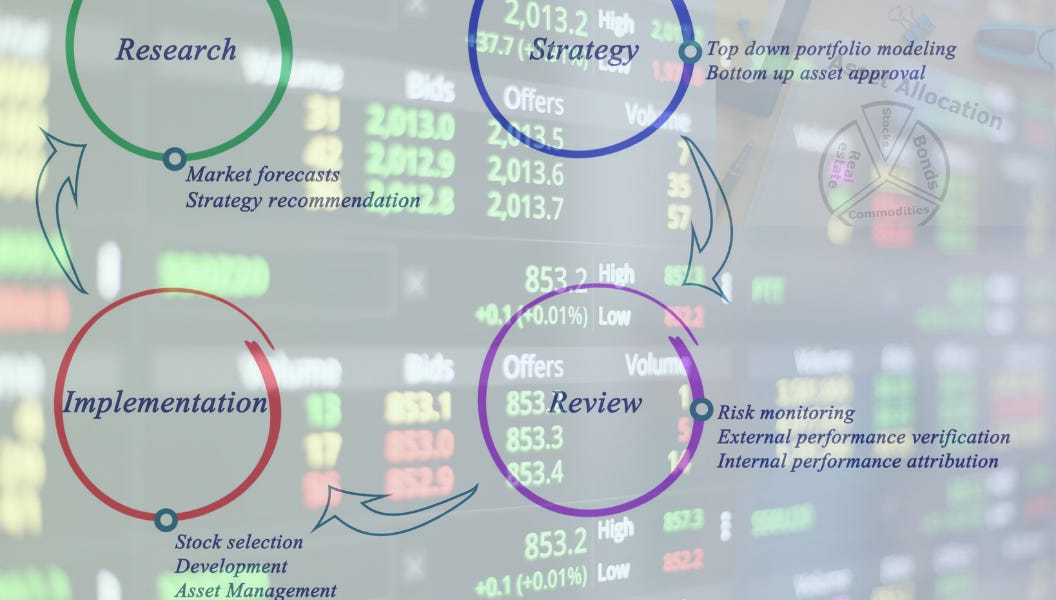After a turbulent 2024, investors enter 2025 facing a mix of opportunities and uncertainties - rising geopolitical risks, shifting Federal Reserve policy, persistent inflation pressures, and continued innovation in AI and biotech. While growth stocks have led the market, the rally has been narrow and concentrated, making diversification and risk management even more critical.
So, how do you build a resilient portfolio in 2025 - one that thrives across market cycles while managing downside risk? Let’s break it down.
Reassess Your Asset Allocation
The classic 60/40 portfolio (60% stocks, 40% bonds) faced significant challenges in recent years, but with higher bond yields and a more balanced economic outlook, a multi-asset approach may offer better risk-adjusted returns.
Portfolio Adjustments to Consider:
Diversify Across Asset Classes – Consider adding alternatives (e.g., private credit, REITs, infrastructure, commodities) to reduce reliance on equities.
Factor in Interest Rate Sensitivity – If rate cuts materialize, growth stocks and long-duration bonds may benefit. If inflation stays sticky, real assets and dividend payers could outperform.
Cash as a Tactical Tool – Higher interest rates mean cash isn’t dead money - money market funds and short-term Treasuries now yield 4-5%, offering a low-risk ballast.
Balance Growth and Defensive Exposure
The Growth Play: AI, Quantum Computing, GLP-1, Space and Clean Tech.
AI and quantum computing will continue reshaping industries, favoring leaders like Nvidia (NVDA), AMD (AMD), and IonQ (IONQ).
GLP-1 weight-loss drugs have transformed healthcare, with Eli Lilly (LLY) and Novo Nordisk (NVO)benefiting from long-term demand.
The Defensive Play: Dividends, Healthcare, and Quality Stocks
Dividend-growth stocks with strong pricing power (think PepsiCo (PEP) or Procter & Gamble (PG)) provide income and resilience.
Healthcare remains a staple, especially with aging populations and rising healthcare spending.
The key takeaway is that you blend secular growth themes with defensive anchors to reduce volatility without sacrificing upside.
Manage Risk Proactively
In 2025, portfolio resilience is as much about what you avoid as what you own.
Common Risks to Watch:
Overconcentration in Megacaps – The “Magnificent 7” (AAPL, MSFT, NVDA, GOOGL, AMZN, META, TSLA) drove markets in 2024. But what if the rotation broadens? Balancing large-cap winners with mid-cap and international exposure can hedge risks.
The AI Capex Boom & Bust? – AI infrastructure spending is at record highs, but at what point does the market price in too much optimism? Stocks like NVDA, AMD, and MSFT are long-term winners but will experience volatility.
Geopolitical & Policy Uncertainty – Election-year policies, tariffs, and global conflicts remain unpredictable. Hedging with commodities, gold, or defense stocks may offer stability.
Portfolio Risk Checklist:
Keep position sizes in check to avoid overexposure.
Consider covered calls or protective puts for hedging.
Monitor correlations - assets that moved together last year may not behave the same way in 2025.
Tactical Flexibility: When to Trim and When to Buy More
Portfolio rebalancing is crucial in a fast-moving market. Key strategies:
Trim overextended winners – If a stock runs 30-50%+ beyond its fundamentals, consider taking partial profits.
Buy quality on dips – Volatility can create buying opportunities in long-term secular themes like cybersecurity (CRWD, PANW), clean energy, and biotech.
Rotate into underperforming but strong sectors – If tech weakens, financials, industrials, or healthcare could step up.
Stay Invested, But Stay Smart
The biggest mistake in a volatile market? Sitting on the sidelines.
While 2025 presents risks, markets reward long-term participation. But success isn’t just about being invested - it’s about being invested wisely.
Here’s the game plan:
Diversify across asset classes to reduce volatility.
Blend high-growth sectors with defensive exposure.
Stay disciplined with risk management and rebalancing.
Use cash tactically, but don’t be afraid to deploy it into market pullbacks.
Here’s Our Take: Adapt and Thrive
A resilient portfolio isn’t just about weathering storms - it’s about positioning for growth while managing risk. In 2025, investors must balance innovation (AI, quantum, GLP-1, Space, Clean Tech) with stability (dividends, bonds, commodities). The challenge lies in allocating capital effectively - identifying long-term secular trends while maintaining downside protection through diversification and smart risk management.
Investors who take a disciplined approach - combining fundamental analysis, valuation awareness, and macroeconomic insight - will be best positioned for success. This means recognizing when to lean into high-growth themes, when to rotate into defensive assets, and how to build resilience amid uncertainty.
This is just the first post in our Portfolio Strategy Series. Stay tuned for deep dives into:
Growth vs. Value: Finding the Right Balance
Managing Risk in a Volatile Market
Alternatives Beyond Stocks: Real Assets, Private Credit, and More





